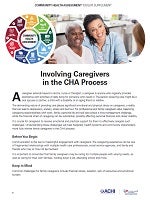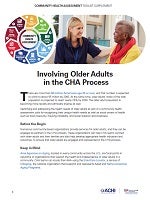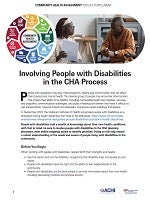Community Health Assessment Supplements
The CHA process outlined in this toolkit calls for inclusivity at every step. However, select populations may need additional considerations to ensure effective and welcoming engagement throughout the process. Explore these supplements for additional insights on engaging select populations at every stage of the CHA process.
View additional resources to further your CHA journey.

Involving Caregivers in the CHA Process
Caregivers provide regular assistance with activities of daily living for someone in need. Learn strategies for incorporating the voices and insights of caregivers in the CHA process, including understanding the challenges they face.

Involving Older Adults in the CHA Process
Involving older adults as part of a CHA calls for recognizing their unique health and social needs. Discover tactics for engaging with this population, which includes a broad range of ages, multiple life stages, and differing levels of dependence and health.

Involving People with Disabilities in the CHA Process
People with disabilities may face misconceptions and stigma that can affect their physical and mental health. Explore strategies to better understand the needs and assets of people with disabilities and involve them in the CHA process.
